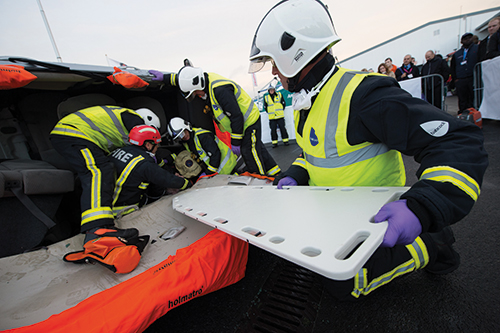Social Media - Help or Hindrance?
I have had an interesting month so far, travelling in UK, Turkey and South Africa discussing the latest methods of extrication with professional rescuers. I love to see regional variations when it comes to extrication and it is fair to say that extrication is performed differently around the world. What is becoming more and more evident is that while the technical aspects of rescue (vehicles, tools and techniques) evolve at a steady pace, the last 2-3 years has seen lots of medical research that suggests a big shift in protocols may be just around the corner. Is this research being communicated effectively and, more importantly, understood correctly?
Access to the latest research
At a recent training event I attended the day started with a rescuer declaring “We are going to stop cutting cars apart and just ask people to get themselves out”. Of course I instantly knew which piece of literature he had read in order to formulate his opinion and while I accept that the comment was made in good humour, it does show that the proliferation of medical research is starting to lead technical rescuers to be somewhat confused as to exactly what is good for the patient.
The study looked at the conventional methods of extrication i.e. creating space and using a longboard and suggested that, where applicable, if a patient can self-extricate (if their injuries permit) then this would cause less movement of the spine and therefore be better for the patient. The study used bio mechanical analysis to detect movement of the patient in a limited number of extrication scenarios. It is an interesting study and I would urge everyone to read it. What I would add is that we have always had the option to consider 'walking' the patient out if their injuries allowed, providing of course this was done with medical supervision.

Should self-extrication replace conventional methods?
Historically (and certainly when I joined the fire and rescue service) there was no such information available. All I had at my disposal was a first aid book and I certainly didn't have a doctor I could call for advice. Thankfully times have changed and information is immediately available and accessible and often spread through use of social media. I feel however, this has created a new set of problems.
New policies not adopted overnight
I am, as you may know, an avid user and advocate of social media. In the time it takes me to type 140 characters I can ‘tweet’ any of the world’s most eminent pre-hospital trauma doctors for advice on the medical aspects of extrication. The information contained in their reply will probably relate to peer reviewed literature based on sound research. The answer I receive may be new and ground-breaking, but we have to be aware of the fact that new medical protocols can rarely, if ever, be immediately integrated into organizations that predominantly carry out the technical aspects of the rescue. Any such changes have to be considered, people have to be trained and often new equipment needs to be purchased. This is in addition to considering the impact on other agencies that are involved in the process of extrication.
The recent research into the use of hard collars for spinal protection is another issue that is hotly debated all over the world at this moment in time, with some areas phasing them out in certain circumstances. But ask yourself how practical is it to adopt a ‘no collar’ policy overnight? The immediate relationship between firefighter/rescuer and doctor actually creates a 'bypass' which misses out the remainder of the organization.
Consider the opposing view
We must also consider that for every study that is pro a concept there is often a counter study which offers an opposing view. These studies will have the same validity but are often missed in our desire for innovation.
Multi-agency training remains key
What we effectively have here is many open communication channels on social media between enthusiastic and proactive professionals which is great and should be commended. However, this can never replace local interaction and multi-agency training which allows all stakeholders the ability to phase in the latest concepts in a way that is sustainable and fully understood.
Conclusion
Social media has revolutionized our world and it is a tool that if used effectively, can be the source of information that may have huge impact on the way extrication is carried out in the future. However, we must be measured in our approach. Although an open line of communication (social media) between technical rescuers and medics can only ever be a positive thing, we must remember that the worlds in which they both inhabit can move at very different speeds. While I appreciate that for the innovative thinkers this can cause a frustration, we must always remember that change has to be all inclusive in order for it to be fully effective.
As ever I welcome your feedback
Ian